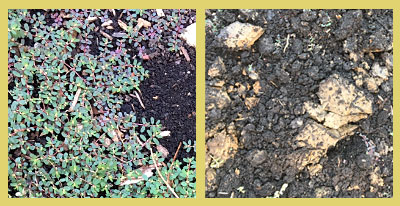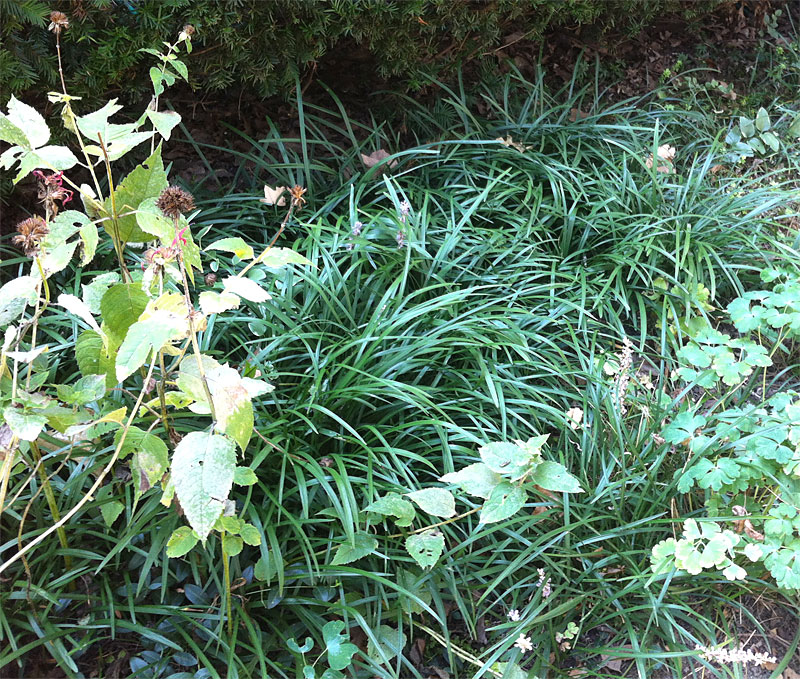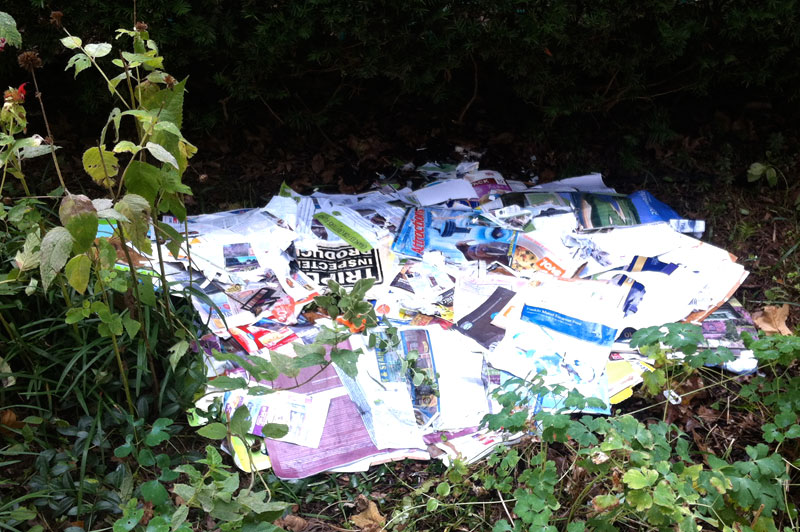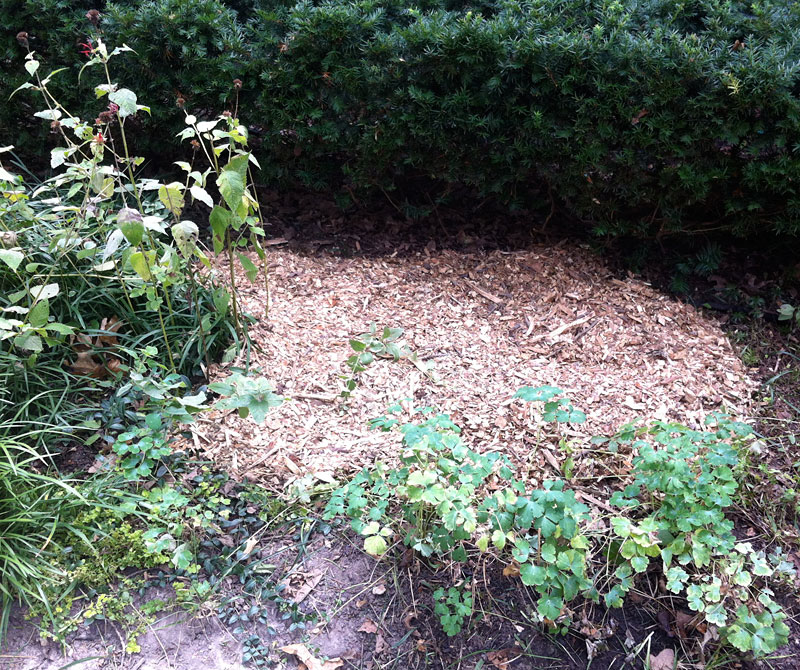Let’s Purge the Spurge! Part 1
One of my frequent landscaping tasks in summer is weeding at clients’ properties. Many of the weeds can be hand-pulled, but on a recent occasion there was such an abundance of Prostrate Spurge (Euphorbia maculata) that it was hopeless to try to pull it in a reasonable amount of time.
After consulting with my colleague, we decided to turn over the soil in the badly infested spots with a spade and bury the spurge rather than try to hand pull it.

At the left is a spurge-infested patch, and on the right is how it looks after the soil is turned over with a spade. Since we are not going to plant anything here, we don’t need to take the time to break up the clay chunks – nature will do the job over time.
There are benefits to turning the soil over:
- Weeds often are able to reach down with taproots and pull nutrients out of hard-packed soil and clay that other plants can’t reach. You can see from the photo above that there is only a thin layer of good soil here with clay underneath. By burying the weeds and letting them decompose, we are returning the nutrients to the soil rather than removing them and discarding them.
- Prostrate Spurge likes compacted soils and by making the soil less compacted we are making it less hospitable to future Spurge.
- The area in question is in a restaurant drive-thru so among the weeds were an abundance of cigarette butts thrown from cars. It sure takes less time to bury the butts than pick them all up!
Turning over the soil has some disadvantages too:
- Bare soil exposed without mulch or existing vegetation is an invitation to weeds so this area needs to be mulched right away. Since the old mulch in this bed was about gone, it was due for a fresh application anyway.
- Turning over the soil exposes possibly buried weed seeds to sunlight and may make them sprout when they otherwise would have lain dormant. Some weed seeds remain viable for up to 100 years! Quick action needs to be taken to prevent a fresh infestation.
We are planning a three inch application of mulch in this bed to suppress and slow down weeds. The mulch will also keep the soil more workable and make it easier to pull future weeds. We don’t think the mulch alone will be enough to control the weeds to the extent we’d like.
In addition to the mulch, we are going to conduct a test of two different preventative measures to see which is most effective and long-lasting. In one half of the bed, we are going to apply a pre-emergent herbicide. On the other half, we are going to put down a layer of cardboard under the mulch to smother any weeds I may have missed plus future weeds that might sprout. The cardboard blocks light getting to the weed seeds. It eventually breaks down and feeds the soil but buys you quite a bit of time – several months to year. Using the cardboard or other layers of organic matter is called “Lasagna Gardening” or “Sheet Composting” and I use it extensively with good results in my own garden. It wouldn’t be practical to try in every circumstance but our test will show whether or not it works well enough to use in some commercial situations. Stay tuned for updates on what happens!


